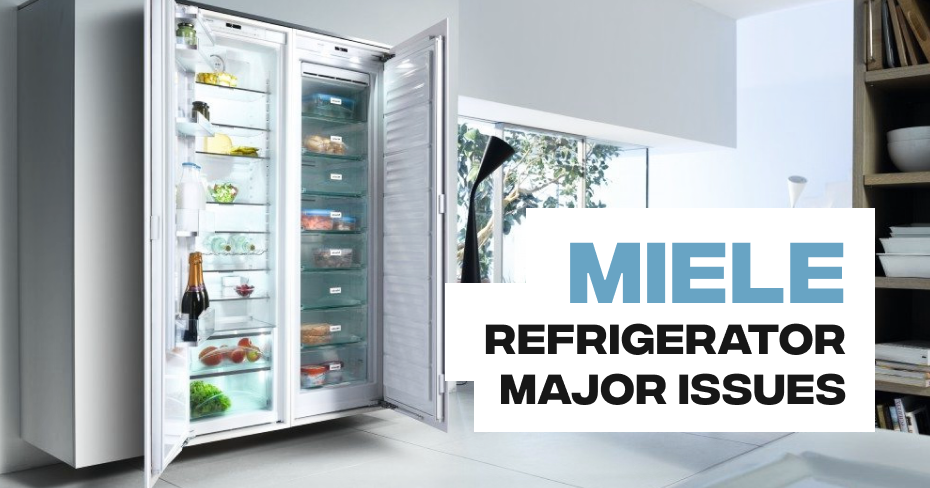
Miele Refrigerator Refrigerator Not Cooling
Is your Miele fridge not cooling? This article explains how to fix possible issues and prevent future cooling problems.
1. Condenser Coils
At the back or bottom of the fridge freezer, you will find the condenser coils. To check if they are the cause of the fridge’s inability to cool, check if there is dirt, dust, grease or a mixture of both on them. If this is so, thoroughly vacuum and dust them.
Cleaning the coils will make them better able to dispense of the heat from the refrigerant as it passes through them. This way, the fridge freezer will not get hot but be able to cool.
2. Evaporator Fan Motor
Check the fan motor by listening for an unusual noise from it. The motor usually hums but if there is a hissing or vibrating sound, the motor is bad and should be replaced.
You can also check it by turning the fan blades to see if they turn freely. If they don’t, the motor is bad. Additionally, test the windings of the motor for continuity if there is no unusual noise and the blades turn fine. If you find no continuity, then replace the motor.
The cool air you feel from the fridge comes from the evaporator fan. If the motor is bad, it won’t be able to cool the evaporator coils and spread the cool air throughout the unit.
3. Condenser Fan Motor
Check the fan blades for any object obstructing it from turning freely. If you find nothing, spin the blades of the fan to check if the motor is defective. And if they spin alright, then test the motor for continuity using a multimeter. But if you find no continuity, you should replace the motor.
This fan keeps the condenser coils and the compressor cool as they work. But if it is unable to do this, the compressor will become too hot and the fridge freezer will become unable to cool.
4. Start Relay
Detach the start relay from the compressor and shake it. It is a small component on the side of the compressor. If you hear a sound like a rattling, the start relay is bad and should be replaced. It helps the compressor run and if it is bad, the compressor is likely not to run and the fridge freezer will not cool.
5. Start Capacitor
With a multimeter, test the start capacitor for continuity. If you find no continuity, then you know it is bad and needs a replacement. Without the capacitor, it is unlikely the compressor will start. And if it doesn’t start, the fridge freezer won’t work.
6. Evaporator Coils
If the evaporator coils have a considerable frost buildup on them, they won’t be able to dispense cool air.
Open the back panel inside the freezer section to gain access to the coils. Thaw them if there is frost on them using the manual defrost method or a hairdryer. If your fridge freezer starts cooling again, then you know they were the problem.
There is a chance the problem is caused by a defective compressor, motherboard or temperature control board. But that chance is little. So, when you check all the parts above and none has any fault, check the compressor, motherboard or temperature control board.
Schedule Appointment